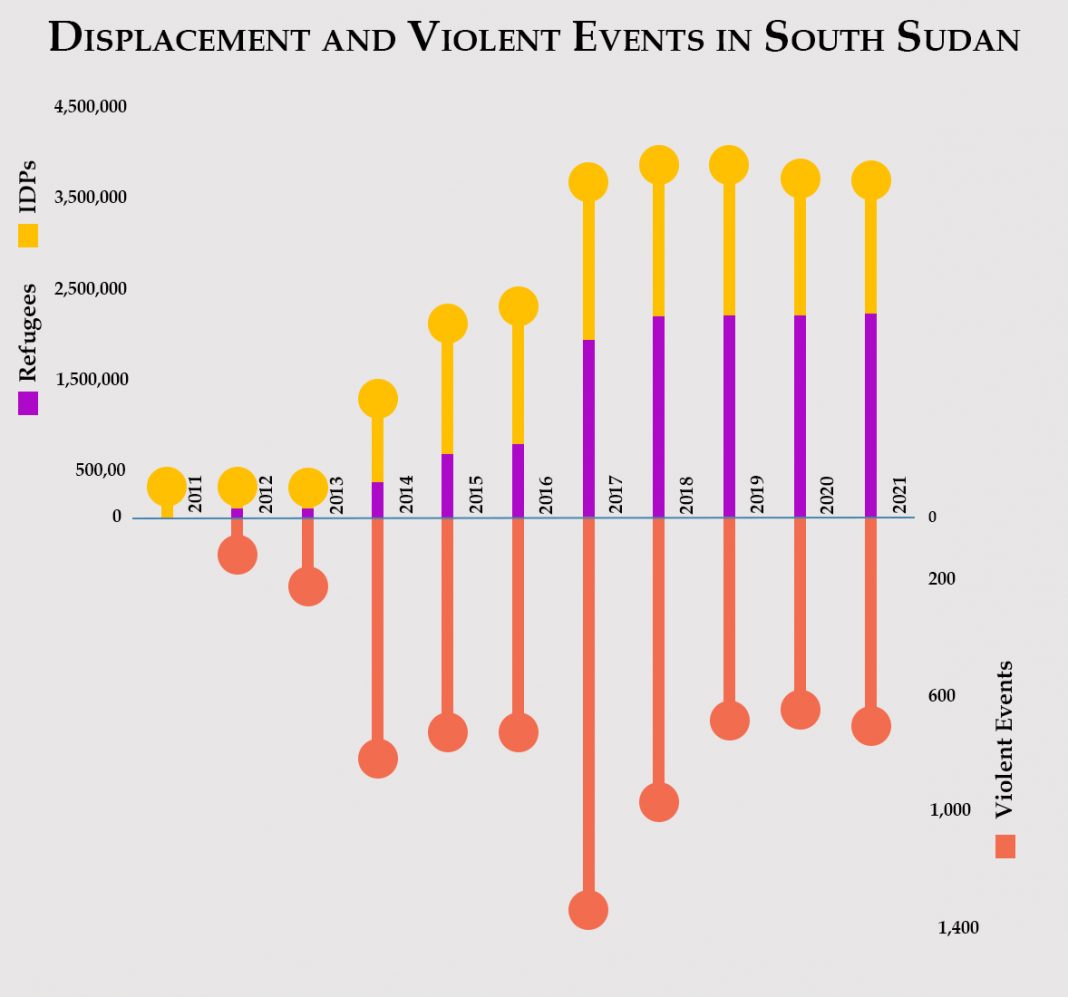
Highlights:
Despite a revitalized peace agreement and an ostensible coalition government, South Sudan continues to be racked by insecurity. Persistently high levels of violence and trauma—which has caused an estimated 400,000 fatalities—continue to grip the population and underscore the unresolved nature of this conflict.
Violent Events
- Despite the Revitalized Agreement on the Resolution of the Conflict in South Sudan of 2018, armed violence in South Sudan remains persistently high and shows little sign of abating. The pace of violent events has remained steady, averaging 733 reported incidents annually since 2017. Violence in 2021 exceeds that of 2019 and 2020.
- Central Equatoria has been a focal point of the violence in recent years, averaging 180 reported episodes annually, or 25 percent of the average national total. However, a map of violent events in South Sudan highlights the breadth of the violence. Jonglei, Unity, Lakes, Upper Nile, Western Equatoria, Eastern Equatoria, and Warrap States have all sustained significant fighting since 2018.
- Violence in South Sudan has also been spatially concentrated around the country’s main road networks. These events highlight the strategic importance of roads in this expansive territory. South Sudan has less than 300 km of paved roads in a country of 650,000 km2, roughly the size of France. The concentration of violent events around transportation networks highlights the vulnerability of populations and goods moving on roads. Each violent event, therefore, has an amplified effect on insecurity and isolation due to the further constriction of movement.
